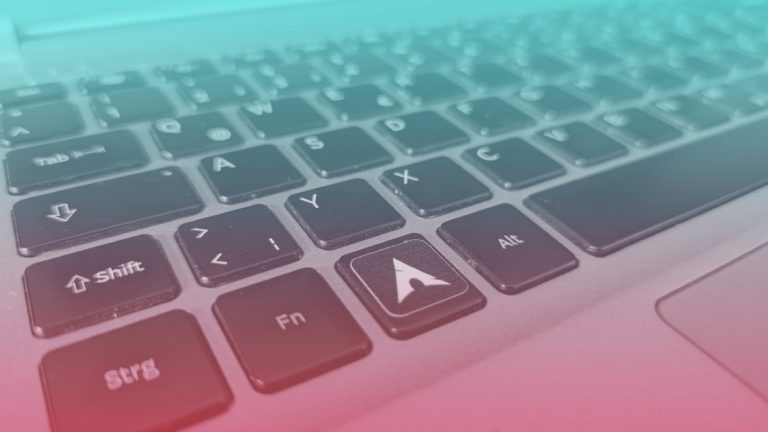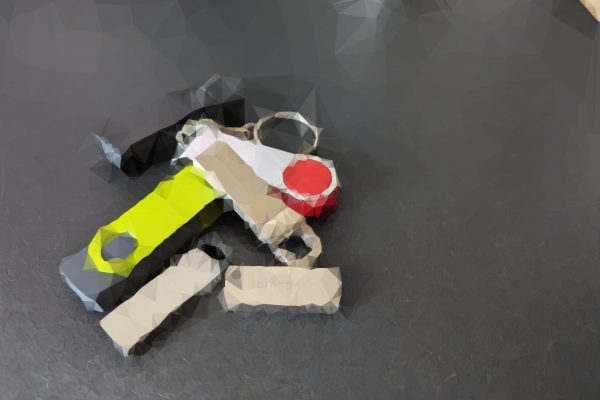Prerequisites
- Download the latest Arch ISO. I refer to the clickable link on the official releases page or – for German users – you can navigate to archlinux.de/downloads
- Check the integrity of the downloaded ISO using the guide you can find on archlinux.org/downloads in the section “HTTP direct downloads”
- Configure a bootable USB stick.
After booting your stick and chosing our preferred keyboard layout, you need to connect to the internet
Installing Arch Linux
Boot the USB stick
First, boot the USB stick on the computer where you want to install Arch Linux. You should be seeing below output.
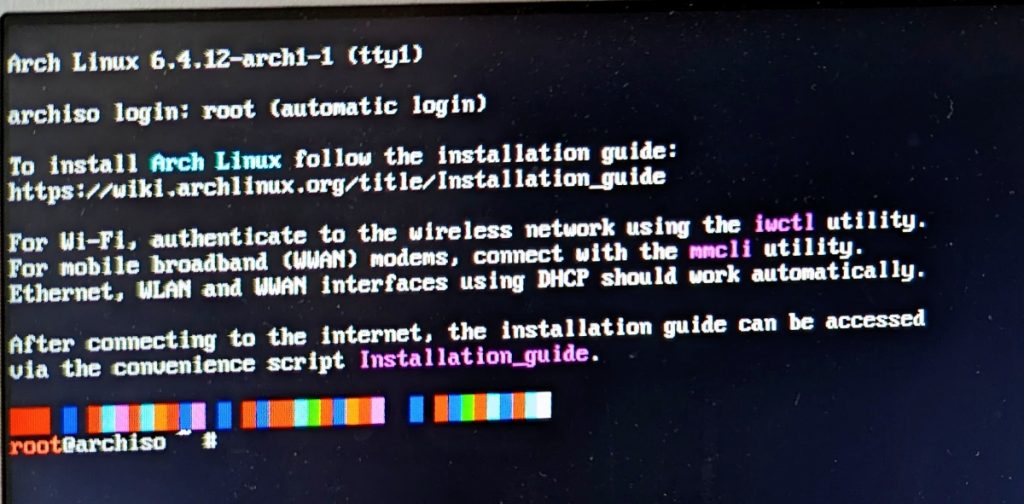
- Load your preferred keyboard layout, for example
loadkeys de-latin1for German. - Connect to a router with a LAN cable directly or connect to your WLAN.
Connecting to WLAN
I use the following commands to wirelessly connect to my router. Each command produces output as you can see in figure 2 below the list.
iwctl
device list
station replace_with_your_device get-networks
station replace_with_your_device connect replace_with_your_WLAN_SSID
exit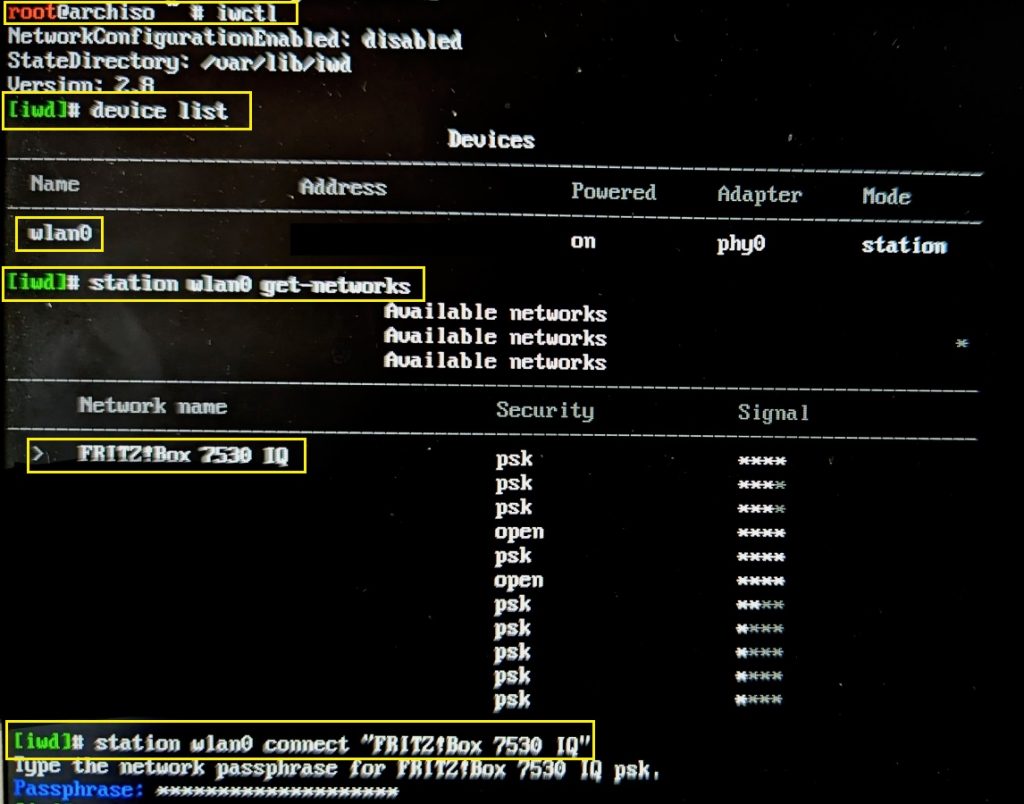
In order to test your connection, you can ping google.com for example. The connection is established if you see ongoing responses of “x bytes received from…”
Archinstall
Run archinstall. You should see the interactive menu in the console (Fig. 3).
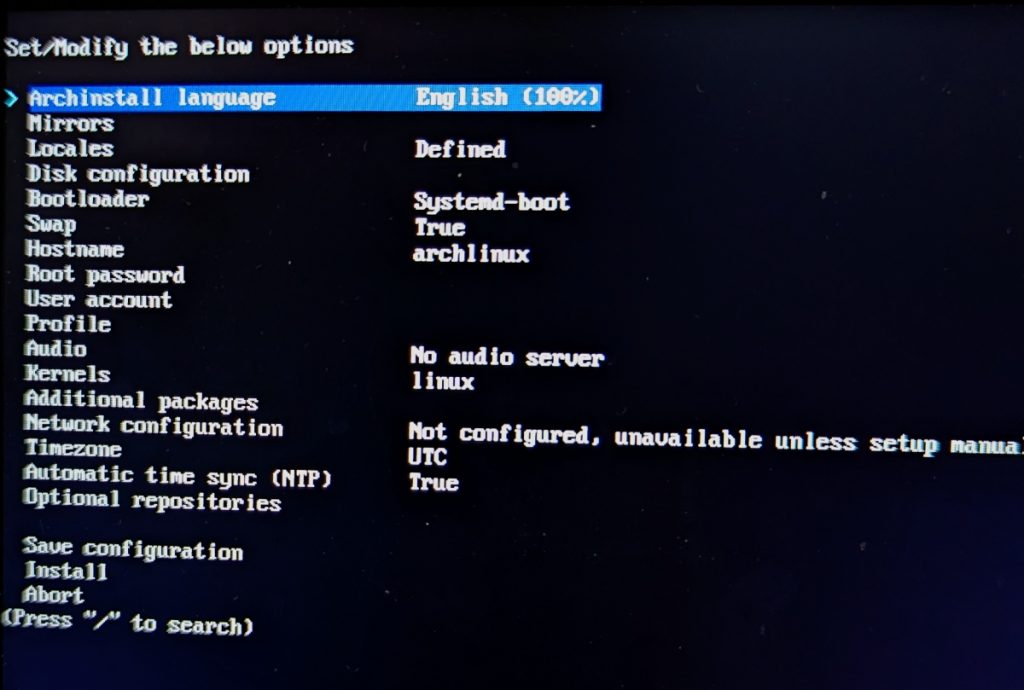
Configuration
The following is an exemplary configuration I use. With Arch not everything is handed to you ready-made on a silver platter, yet if you are up for gaining the necessary background knowledge, it will pay out on the long run. Thus, if you stumble across something unfamiliar in the setup options: do some research, fill your knowledge gaps & improve 🙂
| Config Option | Value | Additional Info |
| Archinstall language | your preferred language | |
| Mirrors | region close to you | What you want to install must come from somewhere. Mirrors are servers providing “all the stuff” you need to install Arch Linux. You can chose a mirror close to your location, since geographical proximity means low latency. |
| Locales | your locale | I chose “de” since I have a German keyboard |
| Disk configuration | best-effort layout filesystem: ext4 | I keep it simple and I am not doing much of manual effort here. |
| Disk encryption | skip | |
| Bootloader | Systemd-boot | https://wiki.archlinux.org/title/systemd-boot |
| Swap | keep default (True) | |
| Hostname | the name you want for your PC | how about archibald 😉 |
| Root Password | your chosen root password | https://wiki.archlinux.org/title/Root |
| User account | add users as you need it | Since I am the only user I always create one admin user with root privileges |
| Profile | Desktop: what you prefer, gnome is quite popular | If you do not select “Desktop” here, you will have an installation with a command line only and not with the GUI you are used to whereyou can login and install und use programs like webbrowsers or office programs. |
| Audio | Pipewire | your choice shouldn’t matter if you are a regular user |
| Kernels | Linux | |
| Additional packages | Skip | I think I always ended up missing packages. But I tend to install them without a hurry afterwards |
| Network configuration | Use NetworkManager | |
| Timezone | your timezone | You can use the search to easily select your zone. For me it is Europe/Berlin. |
| Automatic time sync (NTP) | keep default (True) | |
| Optional repositories | skip |
